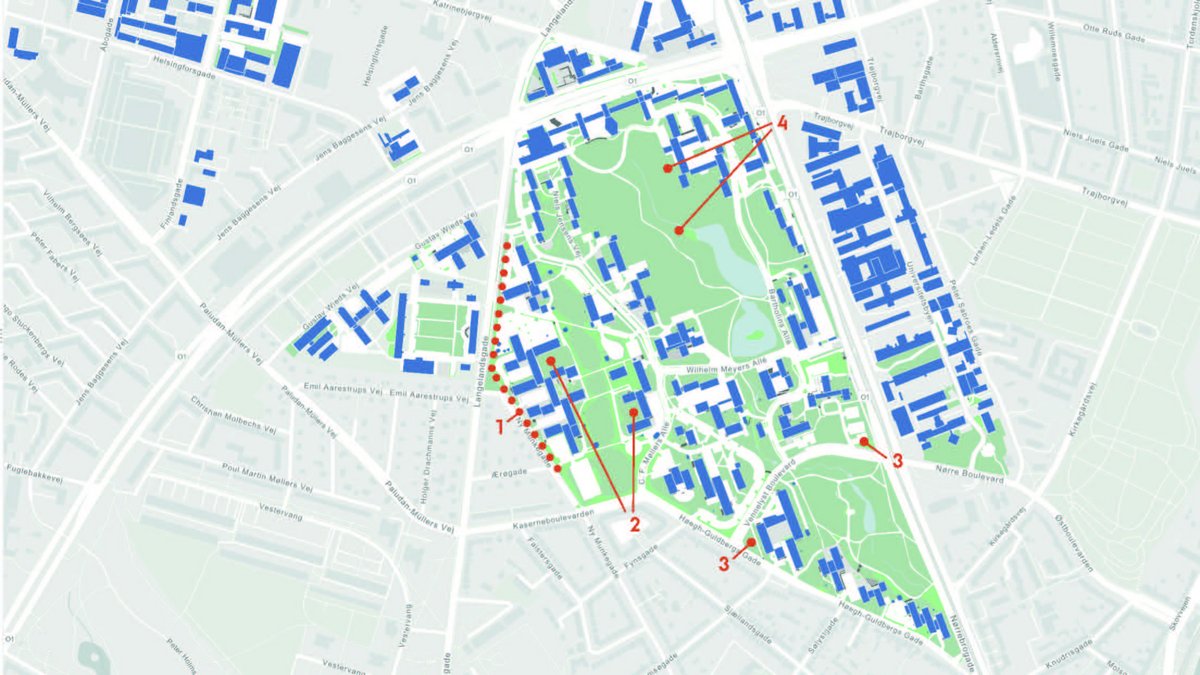Trial areas in the University Park
Four trial areas have been identified that could help contribute to biodiversity in the University Park.
1: Meadow vegetation planted behind the hawthorn hedge
Behind the hawthorn hedge along Ny Munkegade and Langelandsgade, seeds have been sown to grow meadow plants of varying heights, which will serve as a habitat for various insect species. This area will be maintained using the mosaic mowing method so that the vegetation will remain at varying heights throughout the winter, which will benefit insects.
The hawthorn hedge itself is a native species that attracts several insects, and it is trimmed with its flowering in mind.
In the southernmost part of the meadow border is the “Full bloom” biodiversity area, which will be used for experiments and maintained by students from the Department of Biology.
2: Grass and meadow areas in the enclosed courtyards
The enclosed courtyards by the Department of Physics (building 1520) and the Department of Biology (building 1350), which are sheltered from the central part of the University Park, have been transformed into meadow areas.
A few oak tree trunks will be placed in these areas, which will serve both as natural benches and as a habitat for several insects. Small piles of natural stone will also contribute to creating a microclimate for other types of insects.
Attempts will be made to replace the Sargent’s apple shrubbery, which was planted in the 1980s and is of Japanese descent, with native shrub varieties. In addition, small amounts of twigs and brushwood will be laid out at the bottom of the shrubbery, where, along with scattered piles of leaves, they will create good habitats for insects.
3: Grass and meadow areas by Vennelyst Boulevard
The grass will be allowed to grow tall on the corner of Vennelyst Boulevard and Høegh-Guldbergs Gade, near the Aarhus School of Dentistry, while seed mixtures have been sown on the corner of Vennelyst Boulevard and Nørrebrogade to produce meadow vegetation of low and varying heights. The plant varieties will gradually intermingle and create a rich, natural plant community – to the benefit of animals and insects.
4: Grass lawns and planting by the lake
In the more sloping grassy areas of the University Park, the possibility of introducing more low-growing rosette plants by replacing some existing plants or by scattering seed will be investigated. The idea is that the rosette plants should blend into the grass without altering the area’s overall appearance. The grass will also be allowed to grow a little taller under some of the oak trees.
Today, in the area where the brooklet runs into the lakes, many non-native and invasive plant varieties can be found, such as dogwoods, snowberries and butterburs. In the coming seasons, these will be cut back and replaced with native plant varieties.
